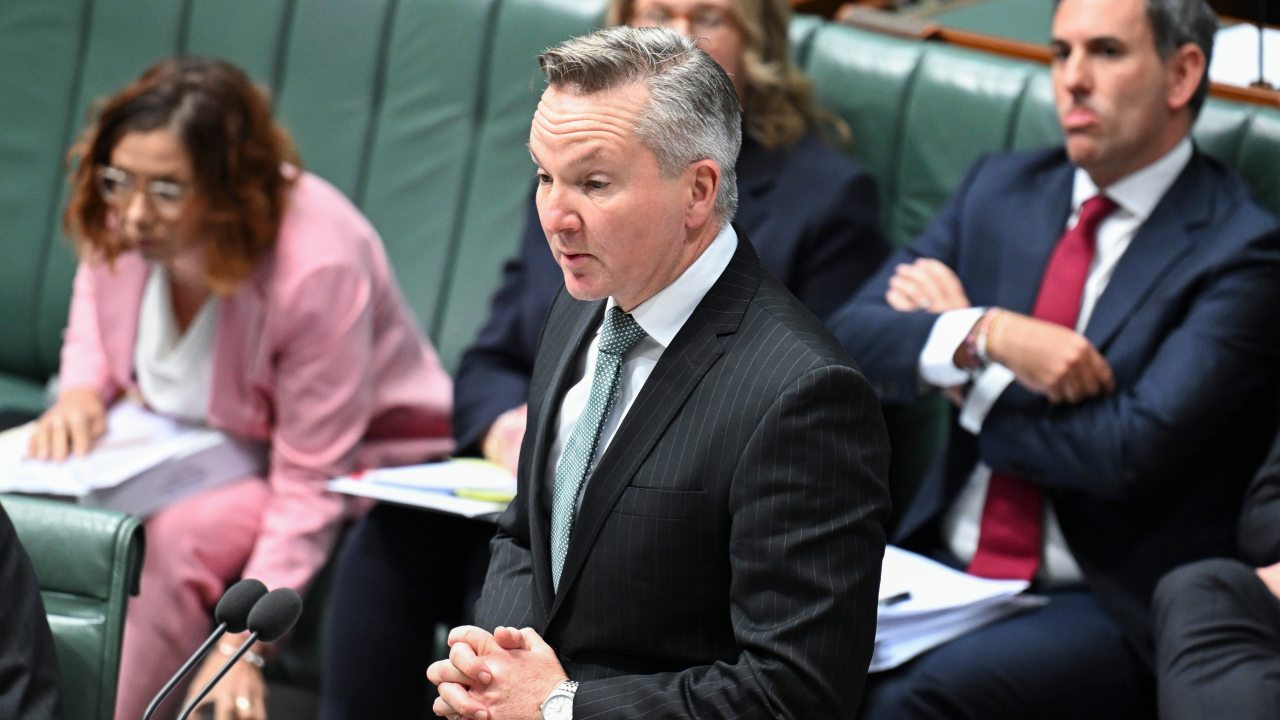Household electricity costs have grown by 23.6 per cent over the past 12 months, as the government continues to insist its energy transition will bring costs down for Australians.
The real cost of electricity grew nine per cent over the September quarter, on top of a rise of an 8.1 per cent in the June quarter, according to the Australian Bureau of Statistics (ABS).
Government rebates, which have largely been responsible for keeping a lid on household power costs, have eased in recent months as most are earmarked to conclude at the end of 2025.
The schemes have been effective in reducing home costs, but have raised questions about the government’s plans to keep power prices down in the long term, in line with previous promises.
Energy Minister Chris Bowen has said, as recently as Question Time on Tuesday, that renewables would be Australia’s “cheapest” energy, while the Prime Minister has echoed his sentiments.
The ABS suggested 4.2 per cent of the quarterly price increase owed to households depleting different rebates from state governments.
They included a $1,000 state rebate in Queensland, a $400 rebate in Western Australia, and a $250 rebate in Tasmania.
“Over the year, those rebates have been used up, and those programs have finished,” the ABS reported.
Data showed relief rebates held down inflation across the nation since their introduction in 2023.
AMP Deputy Chief Economist Diana Mousina said the price increase in the past quarter’s data reflected a “normalisation” of bills as the effect of rebates eased.
“The increase in headline inflation looks so large, because the end of government electricity rebates has resulted in a normalisation in household utility bills, which appears as a big rise in prices,” she said.
The government previously touted its existing rebate schemes, announcing the extension of a minimal automatic rebate in March until the end of the year.
However, there are fears that bills will spike when the majority of subsidies for households and small businesses expire at the end of the year.
Annual price reviews accounted for about 4.8 per cent of the hike.
Earlier this year, the Australian Energy Regulator signed off price hikes in its annual price review and Default Market Offer, the maximum providers can charge for energy.
Customers on standing offer plans should expect bill increases between 8.3 and 9.7 per cent in New South Wales, according to the regulator.
South Australian and Queensland households will see lower increases of about 3.7 per cent, it revealed.
The Energy Minister Chris Bowen’s office referred Skynews.com.au to the Treasury with relation to the figures on Wednesday.
The Department for Climate Change, Energy, the Environment and Water has been contacted for comment.
Mr Bowen claimed, on at least five separate occassions, in September the government’s approach to net zero would bring the “cheapest form of electricity”, in one interview citing the Australian Energy Market Commission’s research showing energy prices dropping by 13 per cent if the government “sticks to its plan of more renewables”.
Anthony Albanese previously hinted modelling for his renewables plan showed electricity prices would fall by as much as 20 per cent in the next ten years, but stopped short of guaranteeing it.
The price of other household energy sources also increased over the past quarter.
Gas and household fuels increased 6.7 per cent after price reviews.
Unleaded fuel prices were largely steady.
In the quarterly CPI report, headline inflation exceeded expectations by breaching three per cent.
KPMG chief economist Dr Brendan Rynne said the uptick had been higher than forecasts, which accounted for the electricity rebate rollbacks.
“We knew there was going to be an uptick in inflation once electricity rebates were wound back, but unfortunately today’s spike is much higher than any of us anticipated and provides the justification for the RBA to sit on its hands in relation to further rate relief,” Dr Rynne said.
It now sits outside the RBA’s 2–3 per cent target after it dipped into the band for the 12 months leading up to the end of the June quarter.
Prior to the release of today’s CPI data, economists had expected trimmed mean inflation – the middle 70 per cent of price changes core to the RBA’s call – to stay at 2.7 per cent.
But trimmed mean inflation too jumped by three per cent, and lifted for the first time since December 2022.

